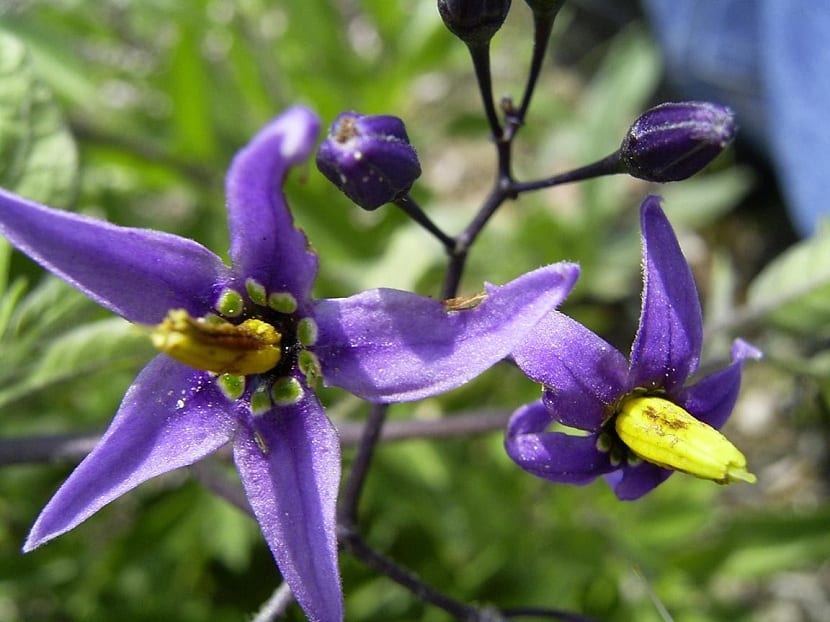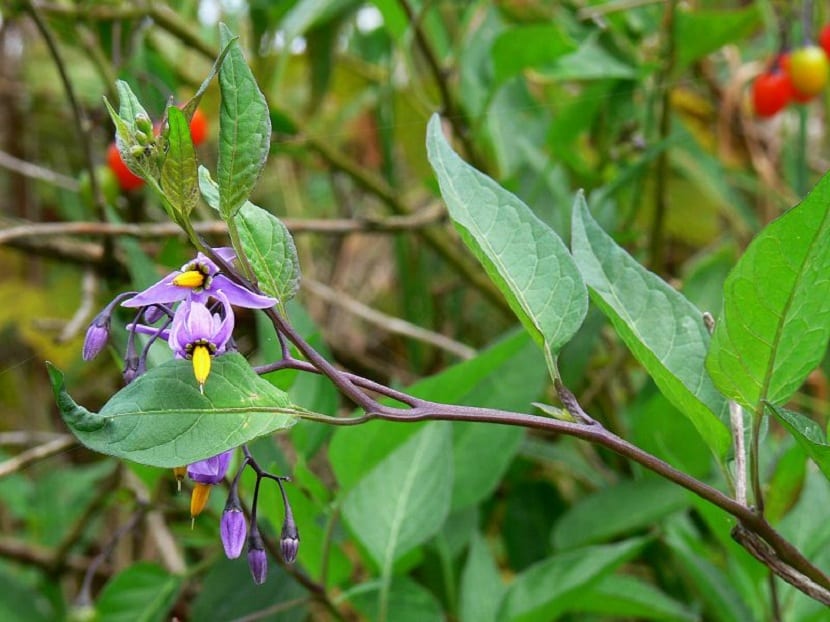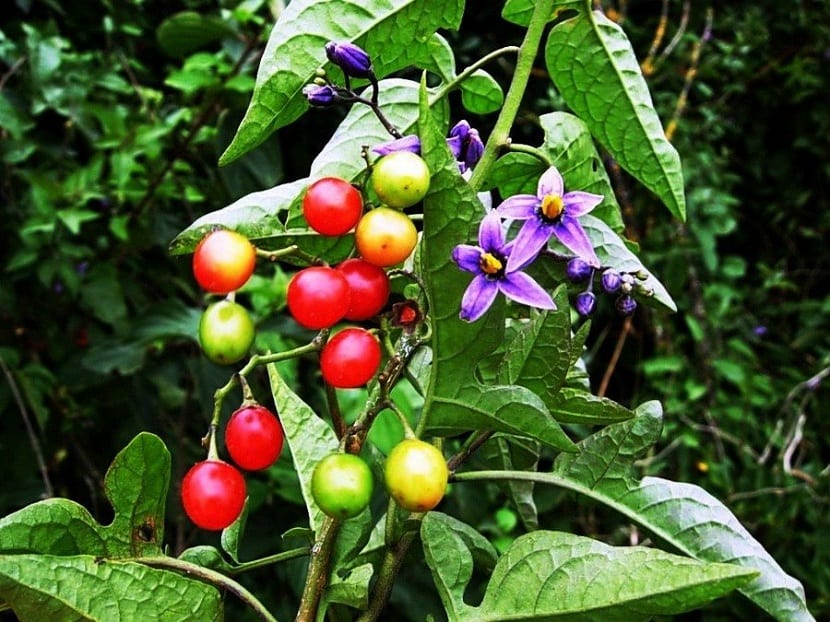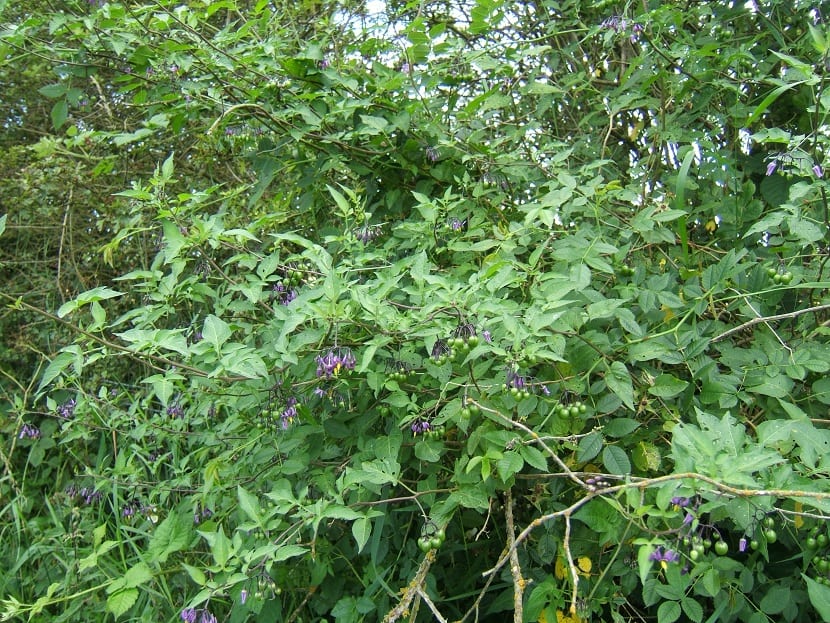
There are some plants whose common names give them a wrong reputation. This is the case of Solanum dulcamara. It is a fairly old medicinal plant whose common name is devil's grape. With this common name, no one would think that it is a medicinal plant, quite the opposite. I would think that it is a poisonous plant or with a certain degree of toxicity that it is better to stay away from. In fact, when people see the small red fruits that they can get to misinterpret the potential that the plant has.
Therefore, we are going to dedicate this article to Solanum dulcamara to explain everything about her. We will tell you from its main characteristics to what medicinal properties it has and how to grow it.
Key features

This plant It was previously considered as a medicinal plant that was used to treat some pathologies. This is no longer the case today. It is a plant that is considered prohibited and poisonous by ORDER SCO / 190/2004. Therefore, this plant cannot currently be cultivated for medicinal purposes. Likewise, although everything that we are going to tell in this article is anecdotal, it is interesting to know the characteristics of a plant that could once be used for medicinal purposes despite being poisonous.
The devil's grape is a solanum which has some interesting aspects. In America it is also known by the name of dulcamara or adela. Among the most important characteristics of this plant we find its tendency to be a climber. This makes it not only used as a medicinal plant, but as a nice decorative plant. By not consuming the leaves or the fruits, there is no need to worry or be so alarmed. Also, if you are a climber, there will be no problems with children or pets. It is rarer for dogs to eat the leaves of garden plants, but there can always be an exception.
When a plant is poisonous but has a place as an ornamental plant, many people throw their hands at their heads. You have to act with your head. Nor are we alarmed that the plant is toxic. As long as it is not consumed or handled without gloves there will be no problems. We also deal with toxic cleaning products and are used to handling them.
The devil's grape can grow to 3 to 4 meters high and has great ornamental beauty. In Spain it is naturally distributed in many areas, although a greater amount is observed in the northernmost area. It is a perennial plant with quite showy purple flowers located in the form of clusters.
Medicinal properties of Solanum dulcamara

Although it is now considered a toxic plant and cannot be used for medicinal purposes, it does not mean that it has healing properties. In fact, it has quite a few properties. The problem with these properties is that they can become poisonous if the minimum dose is not respected.. However, this happens with many drugs and the same, people throw their hands to the head. It will be necessary to heed the prohibition and not use it for medicinal purposes. Everything that we will tell in the rest of the article will be mere information with no practical use, but that is good to know.
The devil's grape has been used in ancient times to treat numerous skin conditions and to combat allergies. When people suffered from herpes, it was also a good option. The dulcamara is used in pharmacy extract to create a kind of treatment against some allergies. The advantage of doing a treatment with a specialist in this field is that the medicinal benefits of this plant can be used. For it, they use the right doses so that it stops being toxic and is effective. As they always say, it is the dose that makes the poison. Even a lot of water can kill us, it is only to know the dose with which we drink it.
In this case, although more complex, the result is the same. If we use this plant with uncontrolled use, it will have serious consequences. Can paralyze the nervous system, reduce the heart rate to very low levels, cause seizures and, at high doses, cause death. All parts of this plant are poisonous, nothing is saved. The fruits, which look like small tomatoes, are too.
Active principles of the devil's grape

El Solanum dulcamara It is made up of a number of active principles that make it have medicinal potential. Among them, tannins, alkaloids and pectins stand out. These active principles are distributed throughout the plant. Hence, this plant is also poisonous to animals if they consume it by mistake.
However, there is a rather curious thing. Birds are immune to devil's grape toxicity. There had to be some natural form of population control. Thanks to the birds, which eat the fruits of this plant, the growth of the populations can be controlled. Any other animal or human that consumes any part of the plant could suffer severe diarrhea, dizziness, vomiting, and the rest of the symptoms mentioned above.
El Solanum dulcamara is listed in some parts of America as an invasive plant. This is because birds are able to scatter the seeds everywhere. In addition, as we will see now, this plant hardly requires care and can develop on its own very well.
Cultivation of Solanum dulcamara

Although it is not recommended if you have pets or children at home, we are going to comment on what care you need in your cultivation. We can take advantage of its ornamental power if it is treated wisely. It can grow in different types of environments and soils. Prefers moist substrate, but will not grow very poorly on drier substrates. To promote its growth, it is better to increase the waterings to maintain a higher humidity.
Regarding its location, it is best to put it in semi-shade. That is, the sun in the morning and in the afternoon should give it, but not the sun at noon, which is the most damaging.
I hope that with these tips you can have your Solanum dulcamara in the garden. However, be careful if there are children or pets in the house to avoid any type of poisoning.
Good afternoon, I have this solanum seaforthianum plant and it has a plague and I don't know how to treat or root it, its leaves turned black and in its size it seems that it is peeling off a white cloth, what can I put on it to combat this plague ?! !!
Hello Jairo.
It's possible that it has a bold? From the symptoms I suspect that the problem with your plant is that. In the link you have information about this disease. It is treated with fungicide.
If you have questions, contact us.
Greetings.